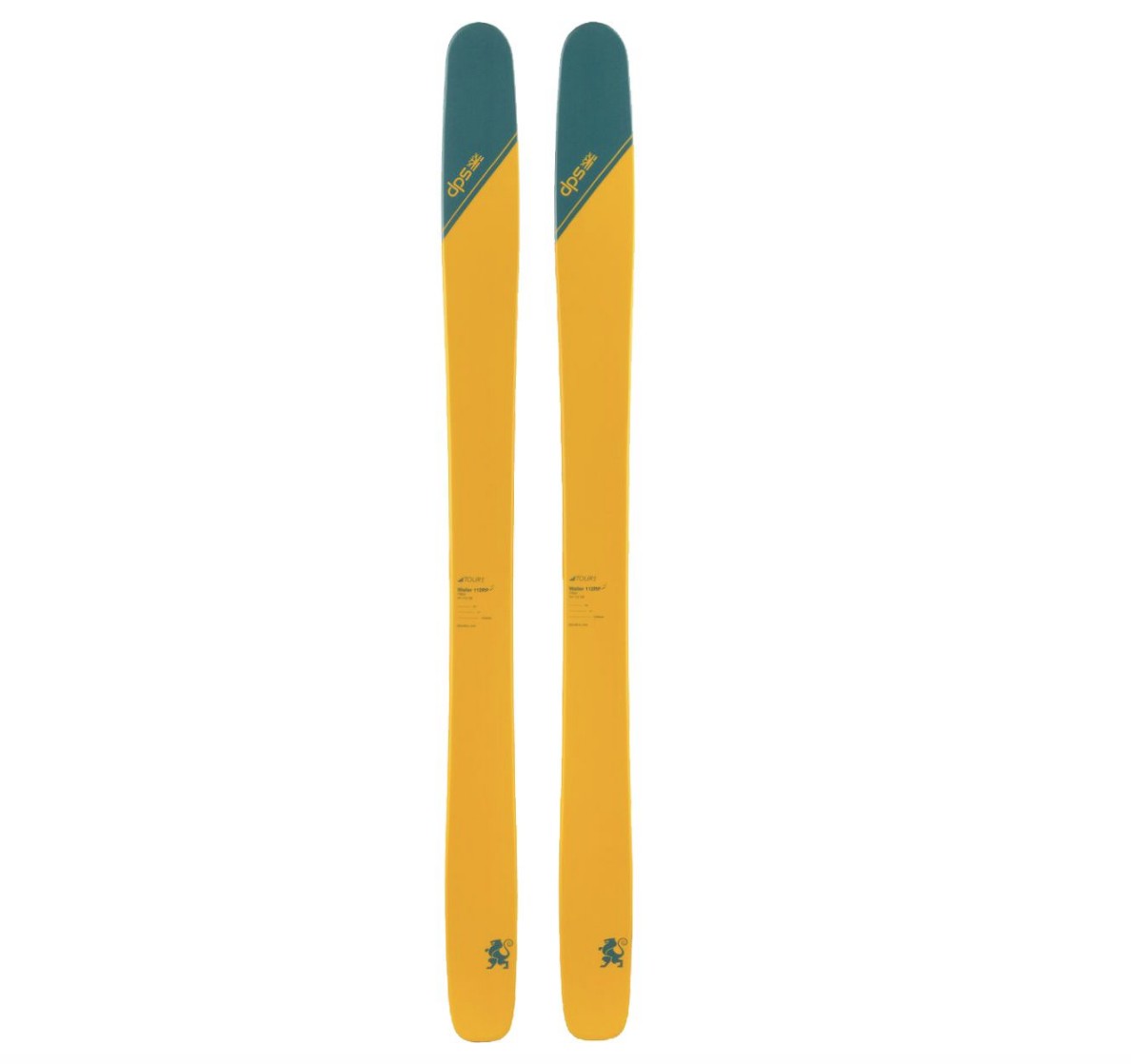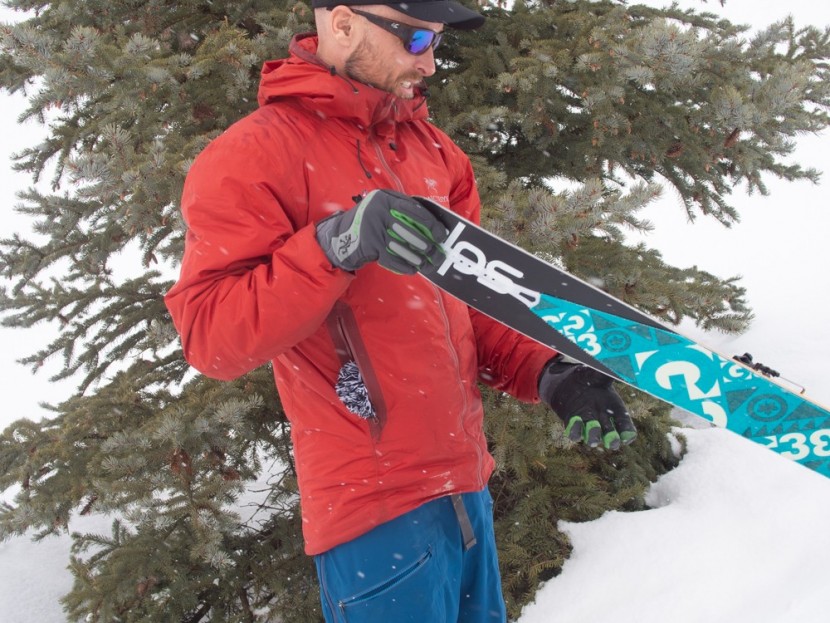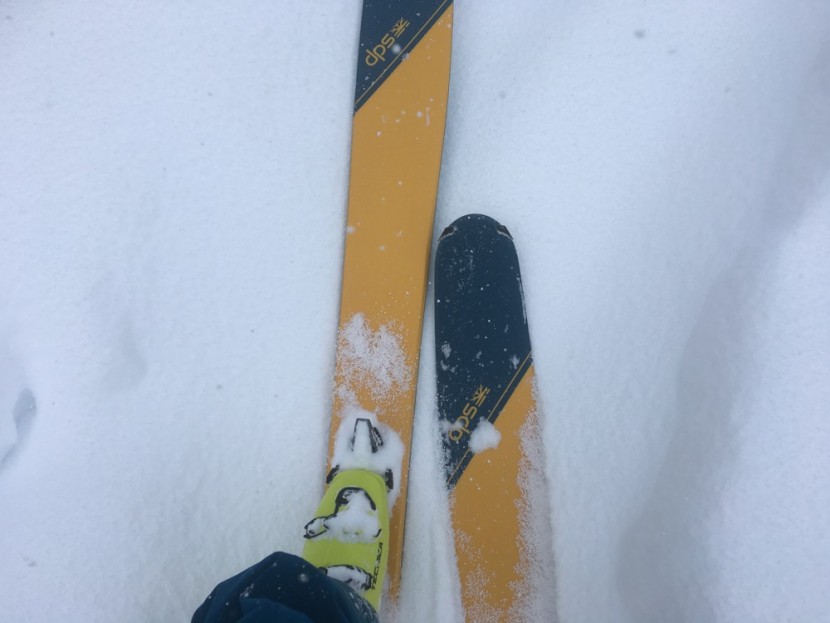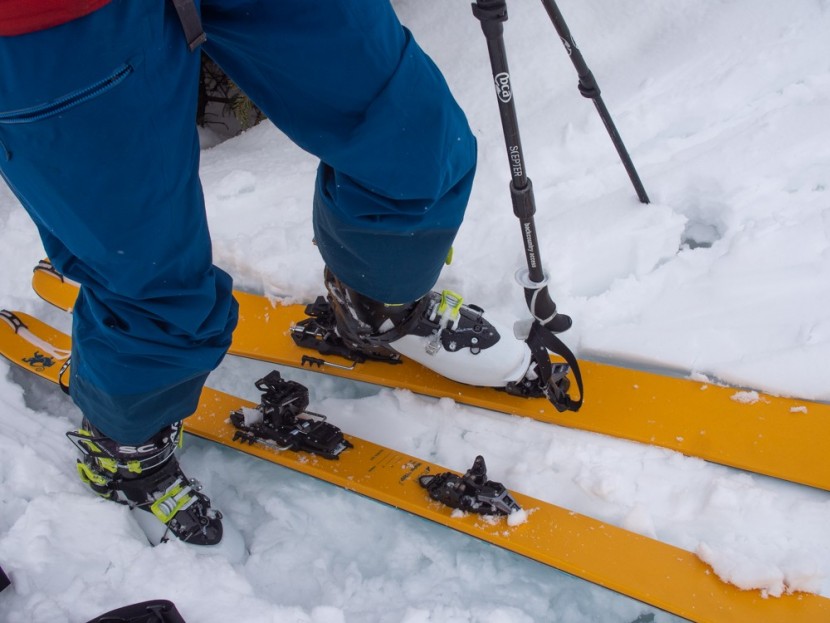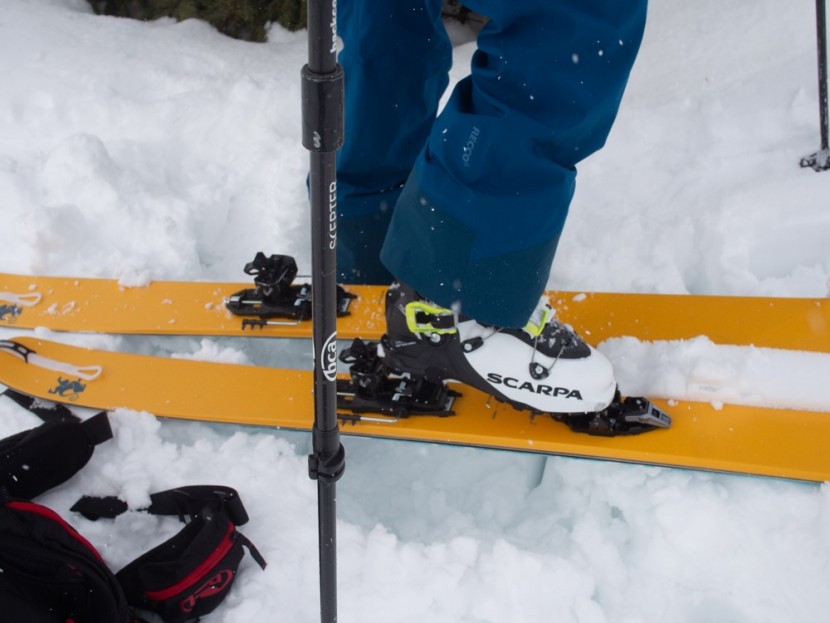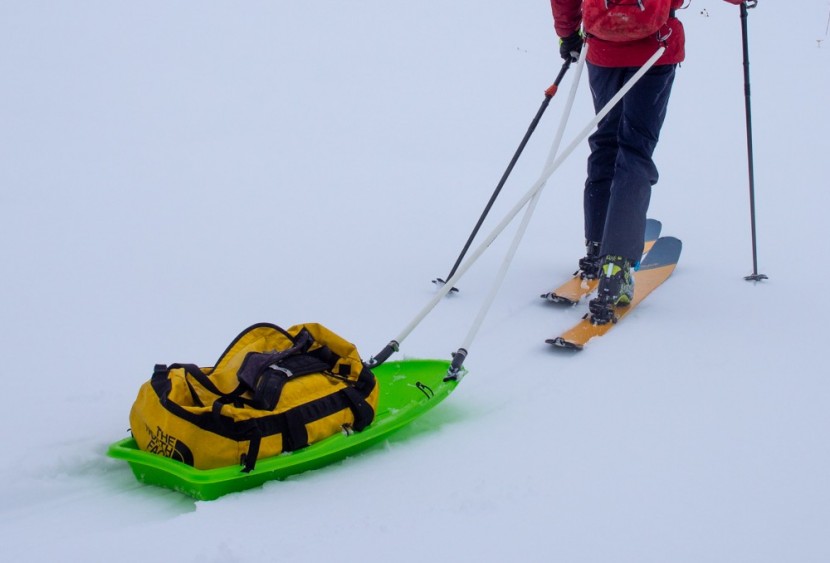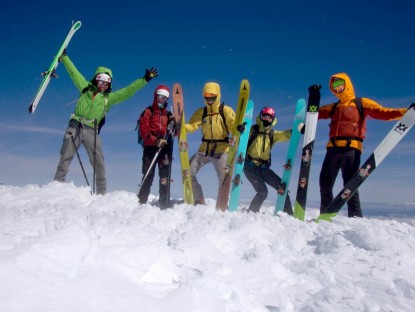DPS Tour1 Wailer 112 RP2 Review
Our Verdict
Our Analysis and Test Results
These are the biggest touring skis we have ever tested, and the waist width alone sets them apart from others. Sure, some are carrying and skiing even wider skis, but that's an anomaly. The 112mm of the underfoot girth of the Wailer 112 Tour1 is huge for human-powered riding. Even in one of the lightest possible construction configurations we know of, skis this big are just going to be heavy.
Performance Comparison
Only a few much more robust touring skis exceed the weight of the Tour1 Wailer 112. Further, the wide and long skins required will only exaggerate the weight difference of these big skis. Nonetheless, these skis are awesome. We can go on and on about the weight, but that all basically shuts right up when we point 'em downhill in wide open powder snow. For pure powder skiing in big terrain, the Tour1 Wailer 112 is our favorite ski and our Top Pick award winner in this subcategory. If you can reliably count on excellent soft snow and open terrain, this ski is worth every bit of its price of admission.
Weight
Each of the tested Wailer 112 skis we tested weighs about 1660 grams. That adds up to just over seven pounds for the pair and two and a half pounds more than the lightest skis we tested. That's right; you can tote skis up the mountain that weigh 65% of what this award winner weighs. That's a big spread. What do you get for that weight? Read on for our elaboration.
Weight is a liability on the uphill, but an asset while going down. The downhill performance is a function of many variables, but weight is a big one of those. It is interesting that “low weight” is a massive part of the marketing copy associated with these skis, but our reviewers only noticed their greater mass. Note that much of backcountry ski PR material is based on comparisons to resort gear. As compared to similarly-sized resort skis, the Wailer 112 Tour1 is featherweight. Even compared to narrower resort skis, this Top Pick is light. However, as compared to what seasoned practitioners and high volume human-powered skiers are regularly choosing, the DPS is heavy.
Stability at Speed
We know DPS skis and that “new school” shape they use; we tested these long. Big tip and tail rocker shortens the effective base and edge length of a ski. For a given absolute length, the DPS Wailer shape is going to feel short. We responded accordingly and purchased (yes, purchased; to minimize potential bias and pressure from ski companies, we purchase at retail all the gear we test) the tester Tour1 112 skis in their 184cm size. This is the largest they make this particular ski and generally longer than we choose for our test team. We size our test skis for our lead test editor at 5'10", 165 pounds, and a high level of ski ability. He then chooses the rest of his team to test this collection of gear.
That additional length is appreciated, at speed. In soft snow and open terrain, there is no speed limit on the Tour1 Wailer 112. A shorter test model might have given us a different impression, but we can only comment on this big gun. We like the tracking, float, and resistance to deflection that the Tour1 Wailer provides at high speeds.
As a counterpoint, realize that everything we have to say about the Tour1 in firm and tough snow (generally, unfavorable) below can be extrapolated to higher speeds in those same conditions, and then some. These things are somewhat terrifying when trying to carve on truly rock hard stuff. Slow it down, and you get what we describe below. Open it up, and you gotta beware.
Firm Snow
You don't pick these skis for firm snow performance. They either complement your all-around quiver, or you only ski perfect powder. Don't think of these as groomer skis, or corn skis, or all-around skis. Their hard snow performance will only let you down.
They aren't terrifying on ice like some powder skis we've used, but they aren't confidence-inspiring either. The short effective edge and wide lever arm under foot conspire to increase the forces you feel through the bindings and boots and decrease your feel and confidence in the edges. The long raised tip and tail flop and chatter on edge.
Powder
If you are wondering whether you should get these for dedicated human-powered big mountain powder skiing, do it. They are an absolute blast, as long as you can go fast and open. That scenario isn't all that common, but it is exactly what our ski movies and Instagram feeds portray. No matter how rare it actually is for you, just a run or two of Wailer 112 Tour1 high-speed pow skiing perfection will make it all worthwhile.
Slow down your powder skiing, and these skis are still fun, but just require a little more work. They like it when the energy comes fore and aft more than when it comes up and down. These aren't your Warren Miller 1980s powder segment ski. They're your slashed turn, snow-spraying, snow-blows-off-your-goggles-before-the-next-turn kind of ski. The width and length in deep snow preclude the effectiveness of 'three-dimensional' powder skiing and rewards carving style.
Crud and Poor Snow
If you can justify these skis, you can also count on very little poor snow. Good, deep powder snow is limited, but when you can count on it, you can also assume that you won't be riding much junk. On the other hand, hunting corn or big ski mountaineering terrain are pursuits that come with a greater percentage of crap snow. These behavioral generalizations are a good thing for the Wailer 112. For a variety of reasons, tough snow isn't their strong suit. We found them to get grabbed by breakable crust and to get pushed around by sloppy snow.
All this is relative, of course. Crappy snow is crappy to ski for all skis. If powder skiing is, on average, a “10/10”, breakable crust is a “2/10”. Good performing tough snow skis can make that breakable crust into a “3/10”, but it'll never feel like the good stuff. These are good performing tough snow skis, but they are not great performing tough snow skis.
Value
The Tour1 Wailer 112 is super expensive. You don't pick these with any sort of value consideration on the top of your list; their specialized performance further hamstrings the value. These are uncompromising, specialized tools for only the most discerning and committed practitioners of a very specialized and rare type of backcountry skiing. Fast deep powder backcountry skiing is specialized and rare, but it is also darn amazing.
Conclusion
We grant a lot of Top Pick awards to backcountry skis. The fact is that it is common for a ski to specialize, at least slightly, and less frequently do we find a top all-rounder. The DPS Wailer 112 is one of these specialized tools. It happens to specialize in the sort of skiing that is the absolute most fun, most photogenic, and sexiest of all.


